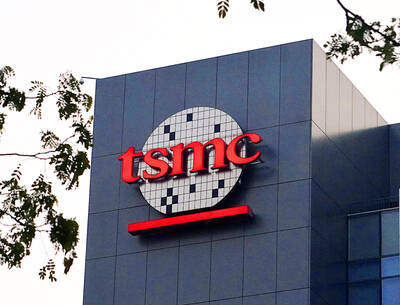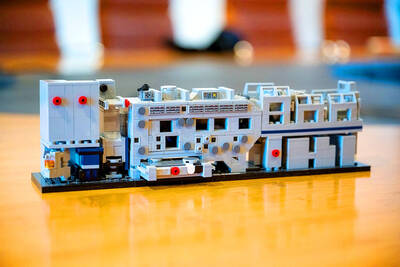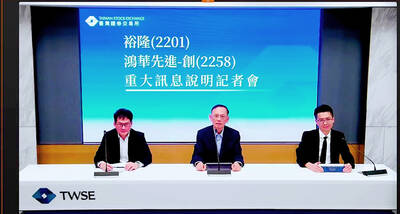Airlines on Monday revised down their traffic and profit forecasts for this year, citing “headwinds” for the global economy, with industry chiefs warning of the risk of increased tariffs impacting the sector.
The International Air Transport Association (IATA) estimates fewer than 5 billion air journeys would take place this year, compared with the previously forecast 5.22 billion.
“The first half of 2025 has brought significant uncertainties to global markets,” IATA director-general Willie Walsh told its annual general meeting in New Delhi.

Photo: AFP
However, “considering the headwinds, it’s a strong result that demonstrates the resilience that airlines have worked hard to fortify,” he added.
Cumulative airline profits would reach US$36 billion this year, US$600 million less than expected, the IATA said.
Commercial aviation revenues are expected to remain below the US$1 trillion forecast in December last year, with the IATA now reporting US$979 billion.
Walsh, addressing IATA delegates, called for the aviation sector to be spared from increased tariffs, although he did not name US President Donald Trump, who unveiled sweeping duties on trading partners in April.
While looking at profits, Walsh warned that “perspective is critical” to put industry-wide figures into context, saying that per passenger, it was still a narrow margin.
“It’s still a thin buffer and any new tax, increase in airport or navigation charge, demand shock or costly regulation will quickly put the industry’s resilience to the test,” he said.
“Policymakers who rely on airlines as the core of a value chain that employs 86.5 million people and supports 3.9 percent of global economic activity must keep this clearly in focus,” he added.
The IATA also expects 69 million tonnes of cargo to be transported by air this year, down from the 72.5 million tonnes previously expected.
A barrel of Brent North Sea crude, the international oil benchmark, stands below US$65 as a result of Trump’s tariffs, his call to “drill baby drill” and especially a decision by the OPEC+ members to hike crude output quotas.
This represents an immediate boon for airlines. Jet fuel is expected to average US$86 a barrel this year, well below the US$99 average last year, “accounting for 25.8 percent of all operating costs,” the IATA said.
The total fuel bill of US$236 billion for this year is US$25 billion lower than last year.
Among the “risks” weighing on commercial aviation, the IATA identified conflicts such as the war in Ukraine, as well as “trade tensions.”
“Tariffs and prolonged trade wars dampen demand for air cargo and potentially travel,” the IATA said.
“Additionally, the uncertainty over how the Trump administration’s trade policies will evolve could hold back critical business decisions that drive economic activity, and with it the demand for air cargo and business travel,” it added.

Taiwan’s long-term economic competitiveness will hinge not only on national champions like Taiwan Semiconductor Manufacturing Co. (TSMC, 台積電) but also on the widespread adoption of artificial intelligence (AI) and other emerging technologies, a US-based scholar has said. At a lecture in Taipei on Tuesday, Jeffrey Ding, assistant professor of political science at the George Washington University and author of "Technology and the Rise of Great Powers," argued that historical experience shows that general-purpose technologies (GPTs) — such as electricity, computers and now AI — shape long-term economic advantages through their diffusion across the broader economy. "What really matters is not who pioneers

In a high-security Shenzhen laboratory, Chinese scientists have built what Washington has spent years trying to prevent: a prototype of a machine capable of producing the cutting-edge semiconductor chips that power artificial intelligence (AI), smartphones and weapons central to Western military dominance, Reuters has learned. Completed early this year and undergoing testing, the prototype fills nearly an entire factory floor. It was built by a team of former engineers from Dutch semiconductor giant ASML who reverse-engineered the company’s extreme ultraviolet lithography (EUV) machines, according to two people with knowledge of the project. EUV machines sit at the heart of a technological Cold

TAIWAN VALUE CHAIN: Foxtron is to fully own Luxgen following the transaction and it plans to launch a new electric model, the Foxtron Bria, in Taiwan next year Yulon Motor Co (裕隆汽車) yesterday said that its board of directors approved the disposal of its electric vehicle (EV) unit, Luxgen Motor Co (納智捷汽車), to Foxtron Vehicle Technologies Co (鴻華先進) for NT$787.6 million (US$24.98 million). Foxtron, a half-half joint venture between Yulon affiliate Hua-Chuang Automobile Information Technical Center Co (華創車電) and Hon Hai Precision Industry Co (鴻海精密), expects to wrap up the deal in the first quarter of next year. Foxtron would fully own Luxgen following the transaction, including five car distributing companies, outlets and all employees. The deal is subject to the approval of the Fair Trade Commission, Foxtron said. “Foxtron will be

INFLATION CONSIDERATION: The BOJ governor said that it would ‘keep making appropriate decisions’ and would adjust depending on the economy and prices The Bank of Japan (BOJ) yesterday raised its benchmark interest rate to the highest in 30 years and said more increases are in the pipeline if conditions allow, in a sign of growing conviction that it can attain the stable inflation target it has pursued for more than a decade. Bank of Japan Governor Kazuo Ueda’s policy board increased the rate by 0.2 percentage points to 0.75 percent, in a unanimous decision, the bank said in a statement. The central bank cited the rising likelihood of its economic outlook being realized. The rate change was expected by all 50 economists surveyed by Bloomberg. The